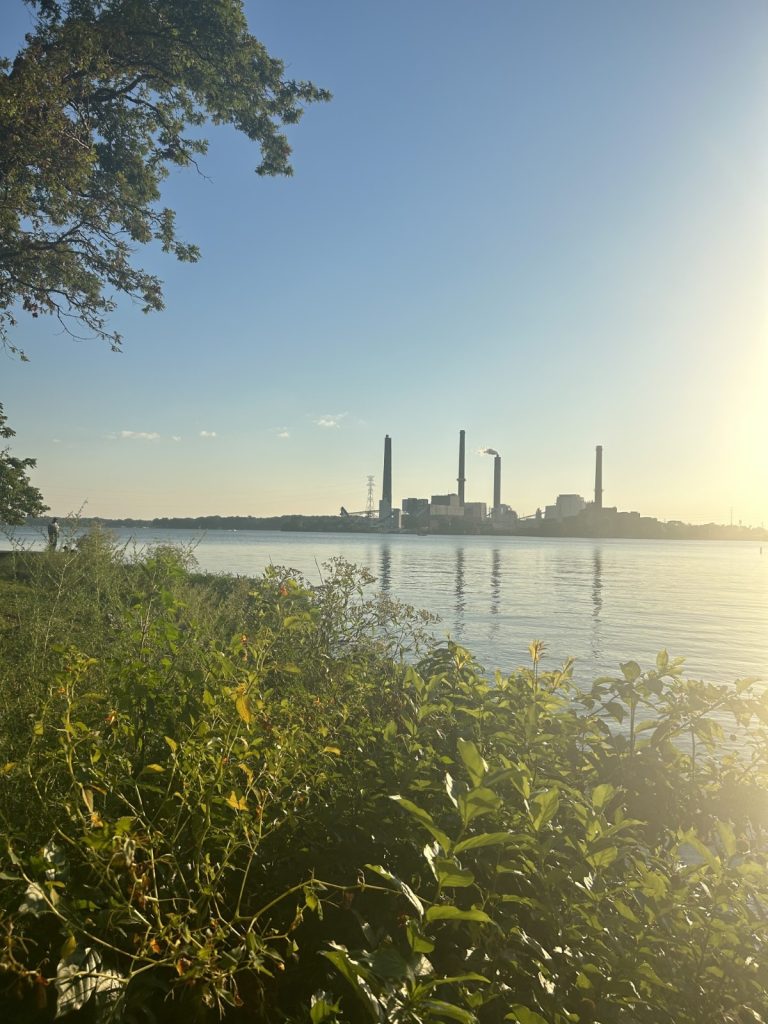


Photos above taken by Venus Morgan to capture the smoke towers that reside on Lake Springfield.
As the sun still shines in Springfield, Illinois, Lake Springfield continues to flourish. Or so, the citizens of Springfield believe. The actuality of this issue is that the CWLP (City Water Light Power) plant, which is Springfields only source of water, light, and power, remains directly under and beside our lake. There are towers that exude smoke which affect the species on the lake, our whole town, and even the body of water in general. This addresses the concept of a wicked problem which is defined as a problem that “cannot be addressed using only traditional approaches” and a sustainability challenge in our textbook, Sustainable World: Approaches to Analyzing and Resolving Wicked Problems written by Sonya Remington-Doucette. They explain that wicked problems have the general characteristics of vague problem definition, undefined solutions, no endpoint, irreversible, unique, and urgent. Lake Springfield’s issue falls under this category.
There is a vague problem definition regarding Lake Springfield because everyone in the town is affected by the issue of clean and ethically sourced water, power, and light. This creates diversity because there are many different statuses within Springfield such as race, economic class, belief, etc. Based on your status you are more likely to be affected directly because if you can afford different ways to obtain these necessities then you can escape it. Although, many people with higher income live directly on the lake, so their resources are not only being affected, but also their house and air quality is worse living closer to the smoke from the factories. Based upon the abundance of different statuses, people are not likely to agree on a solution.
There is an undefined solution to this problem because there are so many factors that play a part in causing it. To be frank, I have personally heard little to no coverage about this issue and the extent of it. That would be the first step in solving this problem. Also, it is difficult to plan a solution because our whole city relies on this plant/lake so we cannot ethically leave families without these resources. Additionally, there are an abundance of animal species that live on the lake, and this affects their day-to-day life. Looking at traditional solutions to this problem could not solve it because either way we step in that direction, it leads to some unethical cause for either/both species.
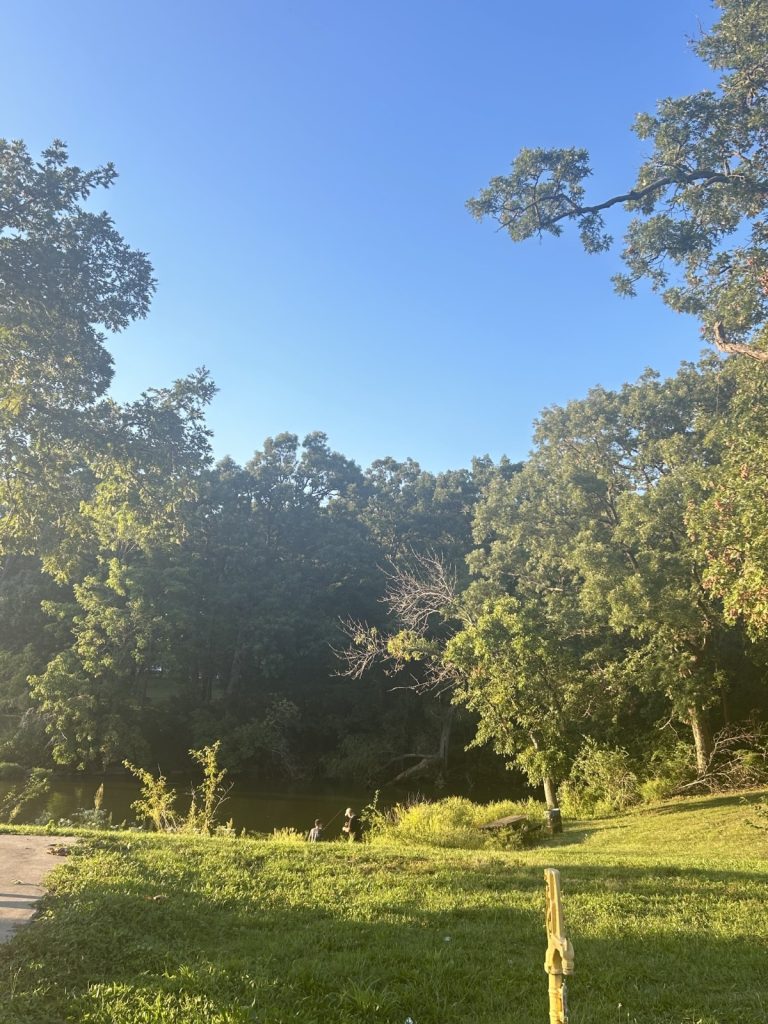
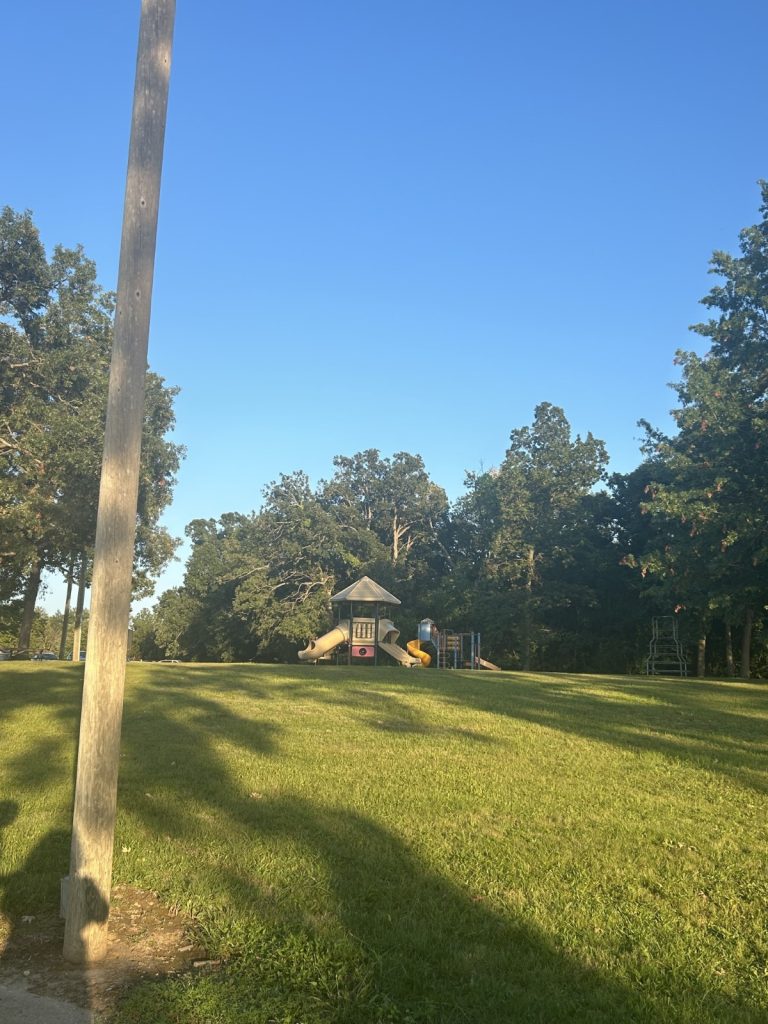
Photos taken above by Venus Morgan capturing a father/son fishing and the playground that is next to Lake Springfield.
This problem has no end point because as stated earlier, if we consider trying to create a more ethical solution, there can be unethical consequences. Considering a solution such as moving the plant to a different location. This is what we initially want, but now it can affect all factors. For example, as these species have lived in these conditions for an extended period, their bodies begin to adapt to it. This can possibly affect their breathing, mobility, life longevity, etc. There are many questions concerning this aspect such as: Where will the animals go? Will they be able to adapt to a new environment? Will moving the plant affect humans access to these necessities? Where would they put this plant where it will not harm species? What will they do to replenish their water? The list of questions and concerns can go on and on, but we will never not have a complex answer.
This issue is irreversible because the problems this caused are so intertwined that they rely on each other. This plant has existed since 1911 which poses a post-industrial problem. This means it affects both the environment and society. A post-industrial problem poses a huge threat to the society that remains. Contextually, industrialization began around the 1800s and is the time when the manufacturing industry, factories, and inventions hit it big. People were not used to having objects that made their lives easier, which allowed them to flourish the way they did. In actuality, the resources they used, and their approach damaged the Earth. For example, the use of fossil fuels as a non-renewable source but also as a main contributor to pollution. This era created the world we see today, and we bear the consequences. Now, within Springfield, we are seeing it come to light in a place that’s too close to home. These socioecological issues bounce off each other. If you try to take one aspect into account, you are risking hurting the other. This shows that these effects cannot be reversed, but we can put effort into trying to improve them. Even the “solution” of possibly improving the effects can create consequences as well. This exemplifies the complexity of this issue.
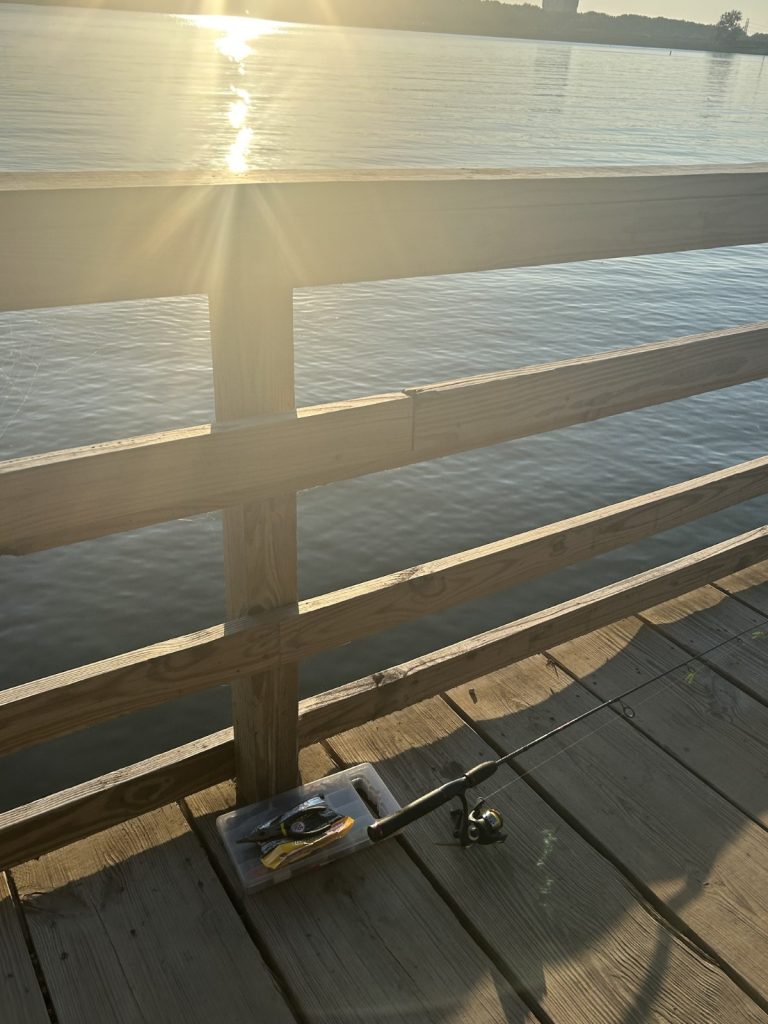
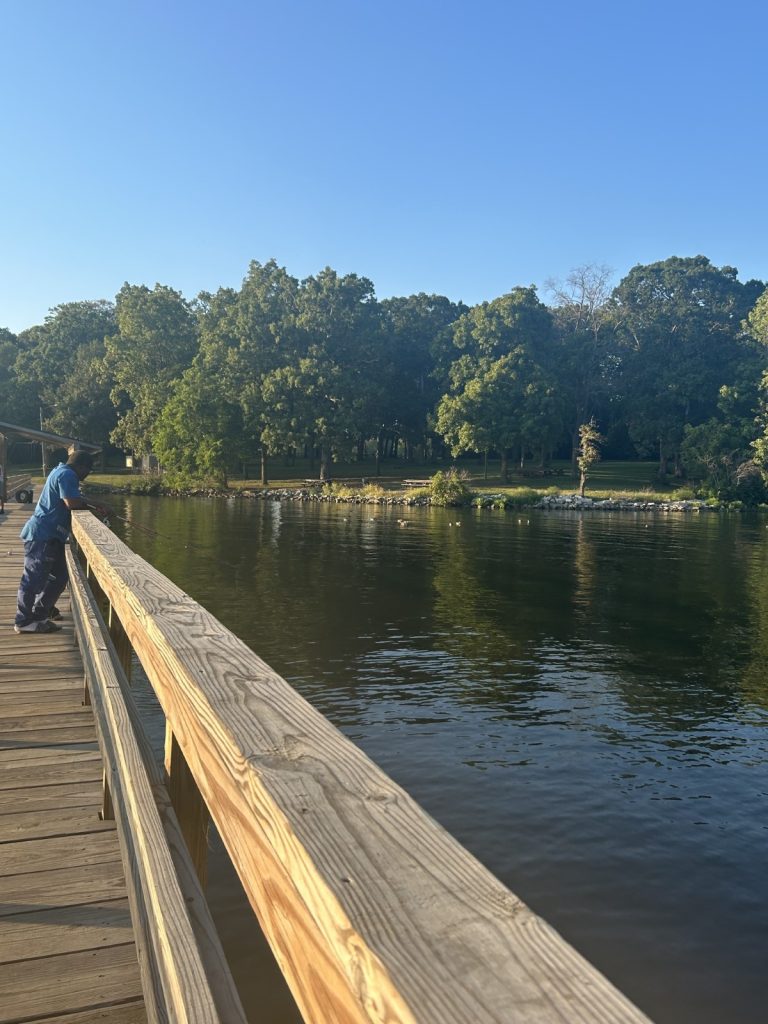
Photos taken above by Venus Morgan to capture fishing on Lake Springfield.
This problem is unique because depending on the location, this problem is distinct. Because this problem is specifically in the Midwest, it poses many cultural effects too. Let’s consider something that seems like a small problem such as fishing. From a widespread perspective, this wouldn’t seem to affect this problem, but it does. It is so normalized to go fishing on this lake, especially for families to teach their descendants to fish. This adds to the issue because more people are directly affected by the quality of the air, water, and even food (if they decide to eat the fish). The lake water is deemed unsanitary, and the PH balance does not even meet the requirements for humans to swim in it. So, what makes people think it is okay to fish here? It seems that this is not considered when people decide to fish because it is so common in our culture to do so. If this issue happened somewhere such as a different country, fishing may not pose an additional problem.
This issue is extremely urgent because if we do not act, this socioecological system will be affected negatively. The species who reside on and around the lake can eventually perish or become endangered because of the chemicals that they breathe and swim in every day. Additionally, if we cannot act urgently the civilians continue to drink water with chemicals in it which can cause death or disease on the body. Also, humans can experience respiratory problems from breathing in the smoke from the factory. This is so complex because we need to solve it quickly, but we also must think intuitively so we don’t affect the community negatively by posing a solution. We need to take all possibilities into account to effectively improve this community and create checkpoints to make sure things are going to plan. This is so difficult because plans like this take a long time, a big team, and a lot of funding. That is why it is so important to be as urgent as possible to improve these living statuses.
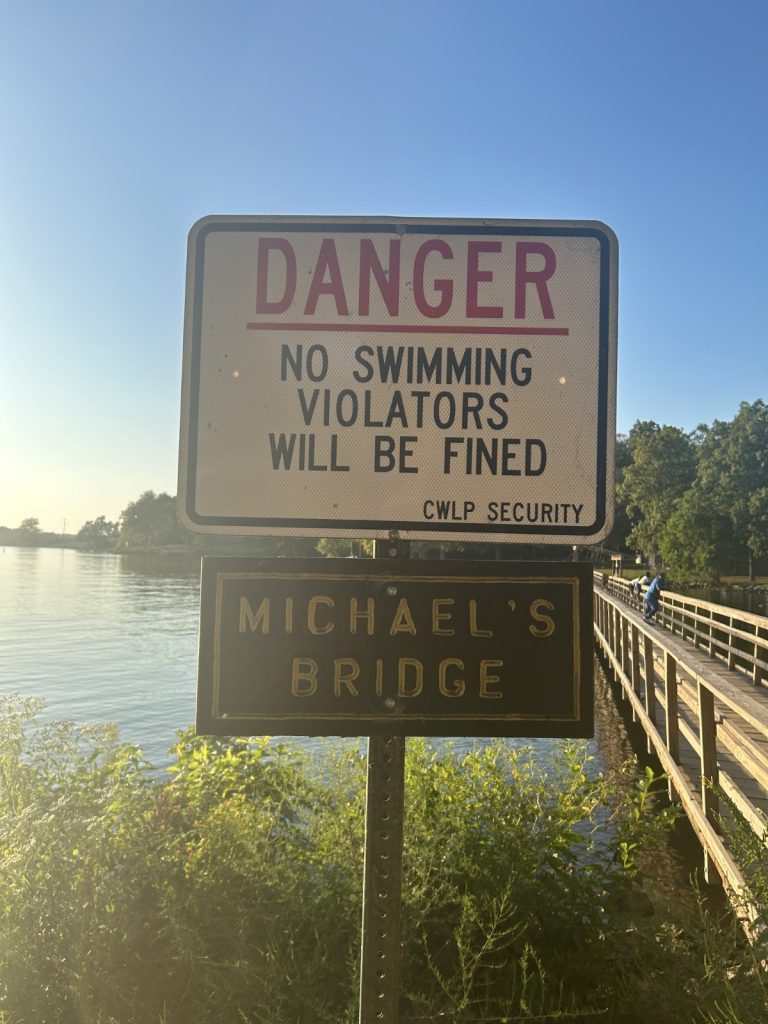
Photo above taken by Venus Morgan to capture a warning for swimming in Lake Springfield.
Leave a Reply